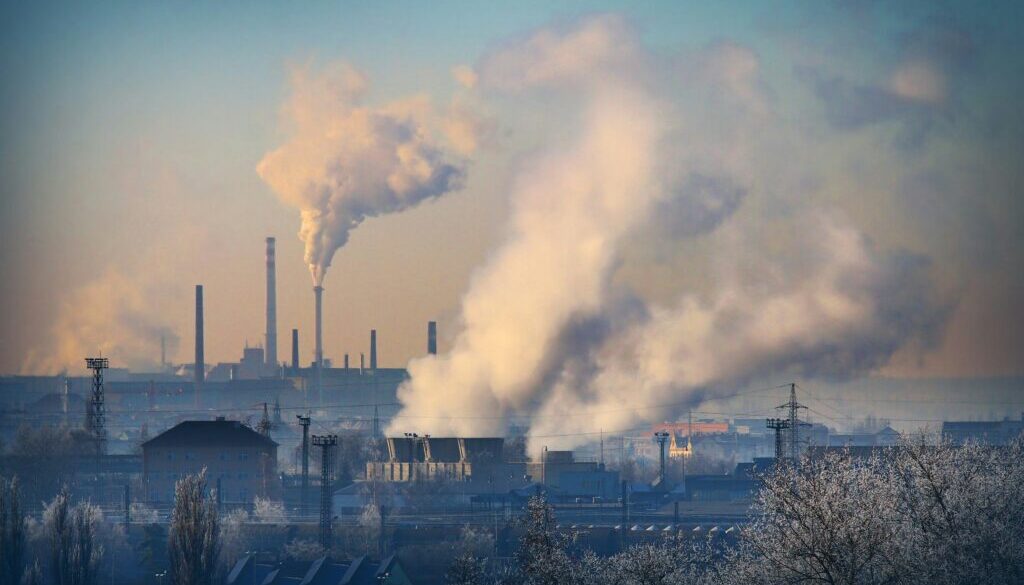“Explosive growth’ in petrochemical production linked to increases in cancers and other diseases in new report
Chemical pollution tied to fossil fuel operations is not only driving harmful climate change but is also posing dire risks to human health at levels that require aggressive private and public efforts to limit exposures, warns a new analysis published in the New England Journal of Medicine on Wednesday.
The article authored by Tracey Woodruff, a professor at the University of California San Francisco (UCSF), cites data from dozens of research studies highlighting what Woodruff calls a nexus between “explosive growth” in the petrochemical industry that includes forecasts for plastic production to grow almost three-fold by 2050, and data showing increases in cancers and other diseases in young people, particularly reproductive cancers in women.
Between 1990 and 2019, rates of neurodevelopmental disorders, diabetes, chronic respiratory disease, and certain cancers are among the non-communicable diseases that have increased, with petrochemicals used in producing plastics and other products among drivers of the growth, according to the paper.
“Numerous medical societies, government agencies, and systematic reviews have concluded that exposure to chemicals and pollution… is an important risk factor for multiple diseases and health inequities and probably contributes to these increases,” the report notes, adding that increases in disease and petrochemical production at the same time “alone cannot be interpreted as causal.”
Doctors and patients need to acknowledge and address the risks, and work to reduce exposures, while regulators need to strengthen chemical evaluations and oversight, said Woodruff, who directs the UCSF Program on Reproductive Health and the Environment and the Environmental Research and Translation for Health (EaRTH) Center.
“This is really important… one of the major factors driving climate change is also increasing our exposures to chemicals that are adversely impacting health,” she said. “Typically people say cancer is a disease of the aging, but now we’re seeing it increasing in people under 50.”
Altering hormones
The use of fossil fuels and petrochemical production is more than 15 times higher now than in the 1950s, and production continues to climb despite growing use of renewable energy sources to power homes and vehicles due in part to a “boom” in production of single-use plastics, according to the new analysis. Plastic production, the analysis reports, is forecast to expand from more than 400 million metric tons to 1100 million metric tons by 2050.
“What we’re seeing in the fossil fuel industry is that they’re not decreasing the amount of fossil fuel production because they’re transitioning it into plastic production,” said Woodruff. “We know that plastic production is already impacting health and will continue to do so.”
Research has shown that many types of petrochemicals used in plastics and other products are endocrine-disrupting chemicals (EDCs), a designation for substances that interfere with healthy hormonal function. Endocrine systems regulate an array of key biological processes, including brain and nervous system development, reproduction, and metabolism and blood sugar levels.
People are being exposed to EDCs in a variety of ways, including through food, air and water contaminated with these types of chemicals. EDCs are used not just in plastics, but also are present in pesticides, building materials and cosmetics, as well as in many fabrics and children’s toys, according to the new analysis. People can be exposed in their homes, schools and workplaces.
EDCs are part of an overall pollution burden that has become the leading cause of premature deaths around the world, according to the analysis. Chemical pollution is estimated to be responsible for at least 1.8 million deaths each year, the paper states.
Action needed
The US Environmental Protection Agency (EPA) says that chemicals that disrupt endocrine systems can lead to problems with male and female fertility and fetal development in both people and animals. Even small disturbances to endocrine function, especially during pregnancy, can lead to “profound and lasting effects,” according to the EPA.
The EPA has been legally required to evaluate pesticides used in food for EDC properties for more than 25 years, but has fallen far short of the mandate. Last year the agency announced a new plan to try to more quickly and effectively evaluate whether or not chemicals were EDCs, saying it would prioritize roughly 400 pesticides for such review.
People of color and those living in low-income areas, or otherwise disadvantaged communities are often facing higher exposure risks than other people. The analysis cites data showing levels of EDCs in urine and blood of Black and Hispanic women “persistently higher” than levels found in non-Hispanic White women.
In January, report, Human Rights Watch highlighted what it said are an array of health-related problems in predominantly Black communities in south-east Louisiana tied to oil and gas operations there. Also in January, Amnesty International reported that Hispanic and Black residents living along the Houston Ship Channel in Texas have been suffering a wide range of illnesses linked to more than 600 fossil fuel and petrochemical plants manufacturing plastics, fertilizers, pesticides and other products.
The paper published Wednesday calls for stricter safety testing of chemicals, more tracking of chemical exposures and full or partial bans on single chemicals and single-use plastics.
“We need to have government policies that ensure that chemicals that are being used and produced in the US are not creating toxic exposures to people,” Woodruff said. “This can really only be accomplished through improved public policies.”
(A version of this story was co-published with The Guardian.)
(Featured photo from Unsplash in collaboration with Getty Images.)
 EWG
EWG


